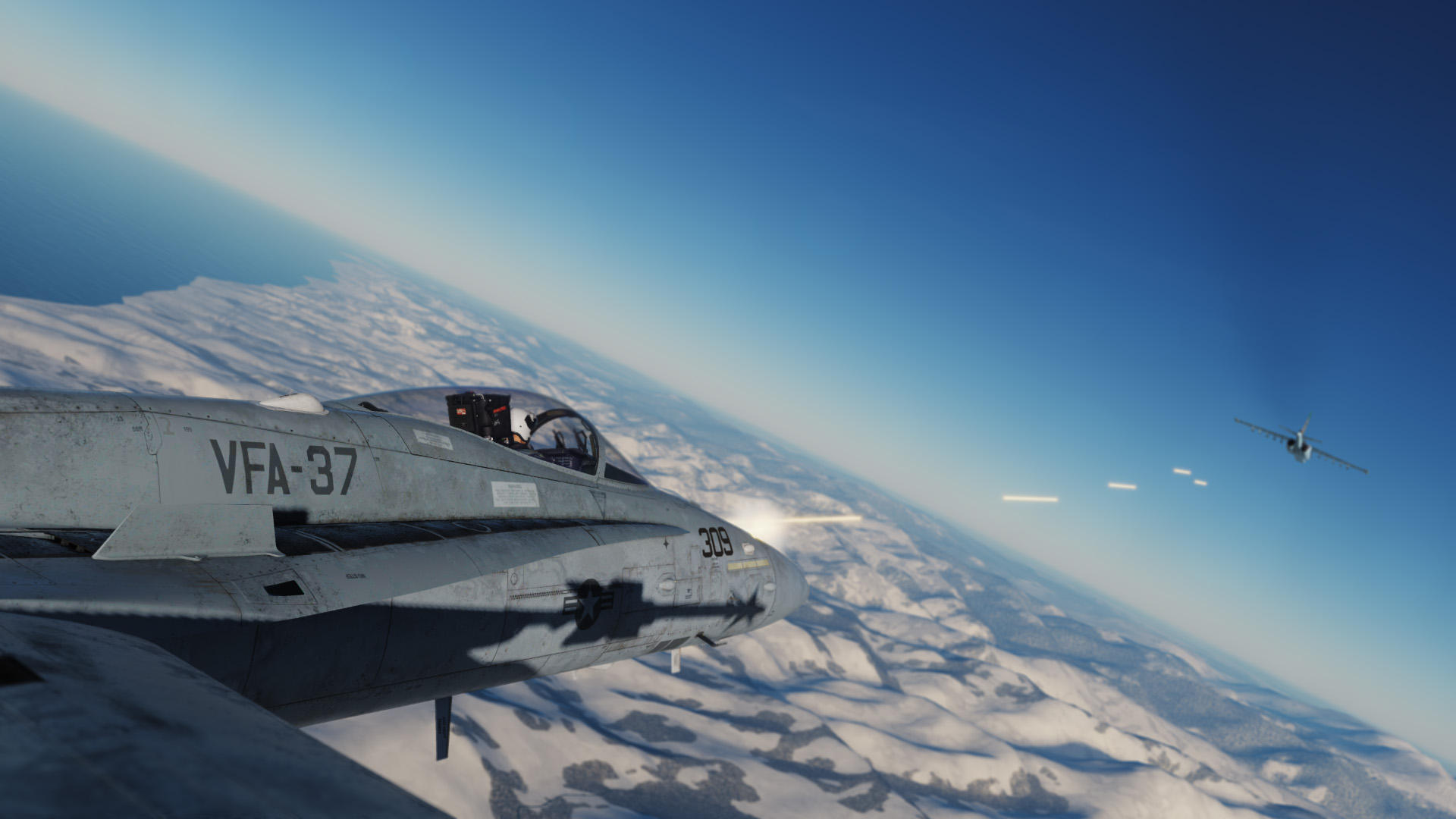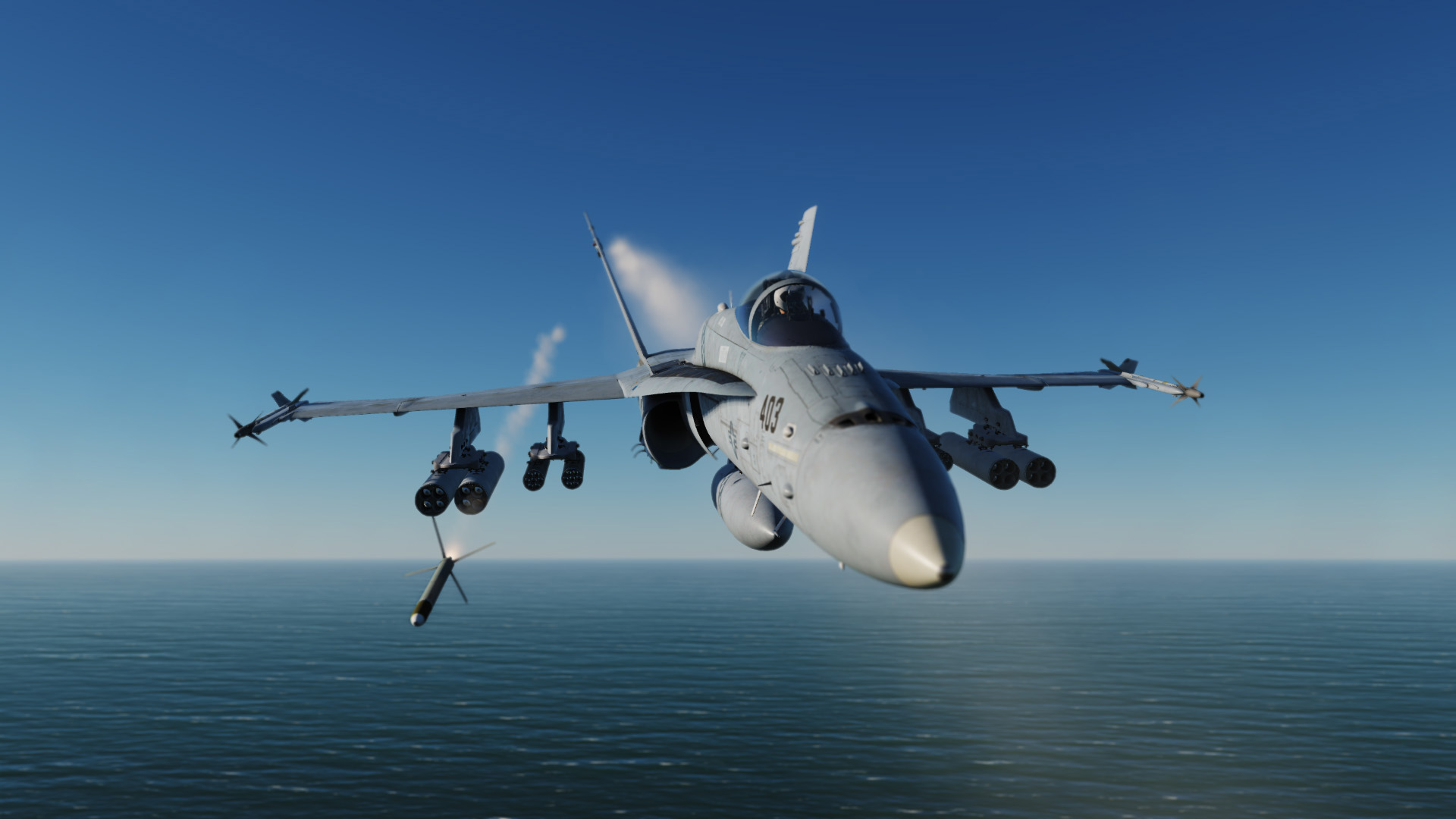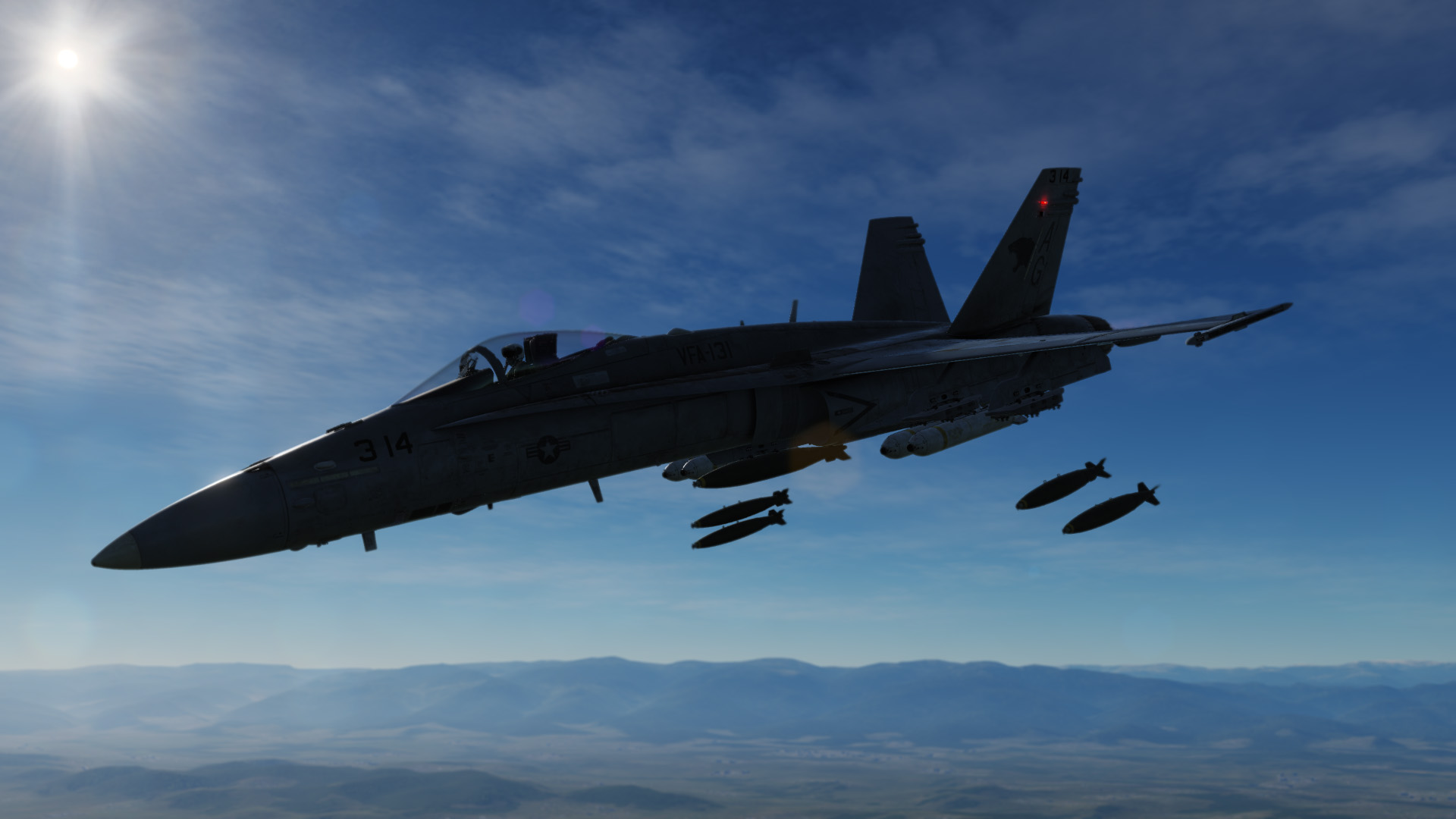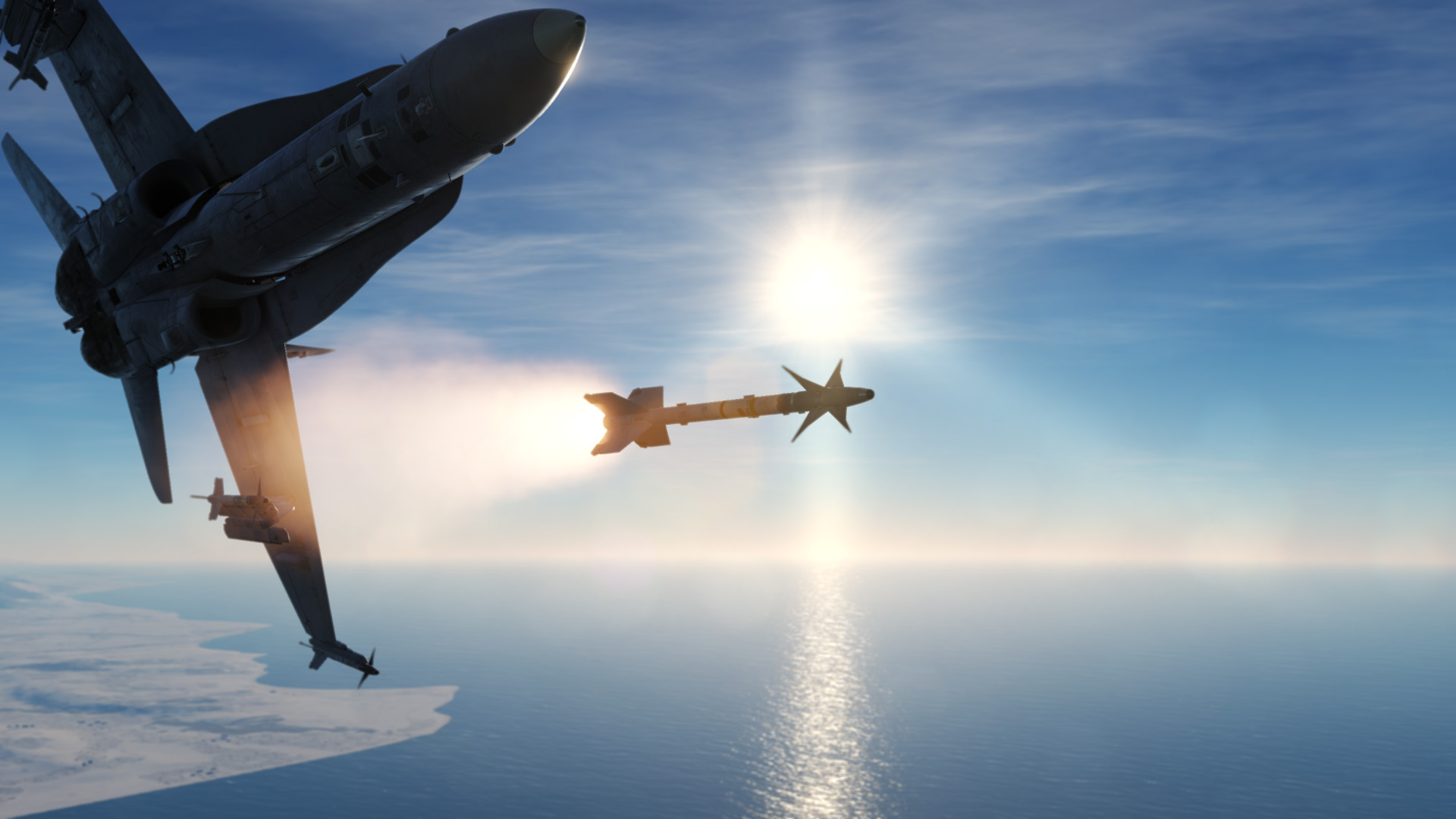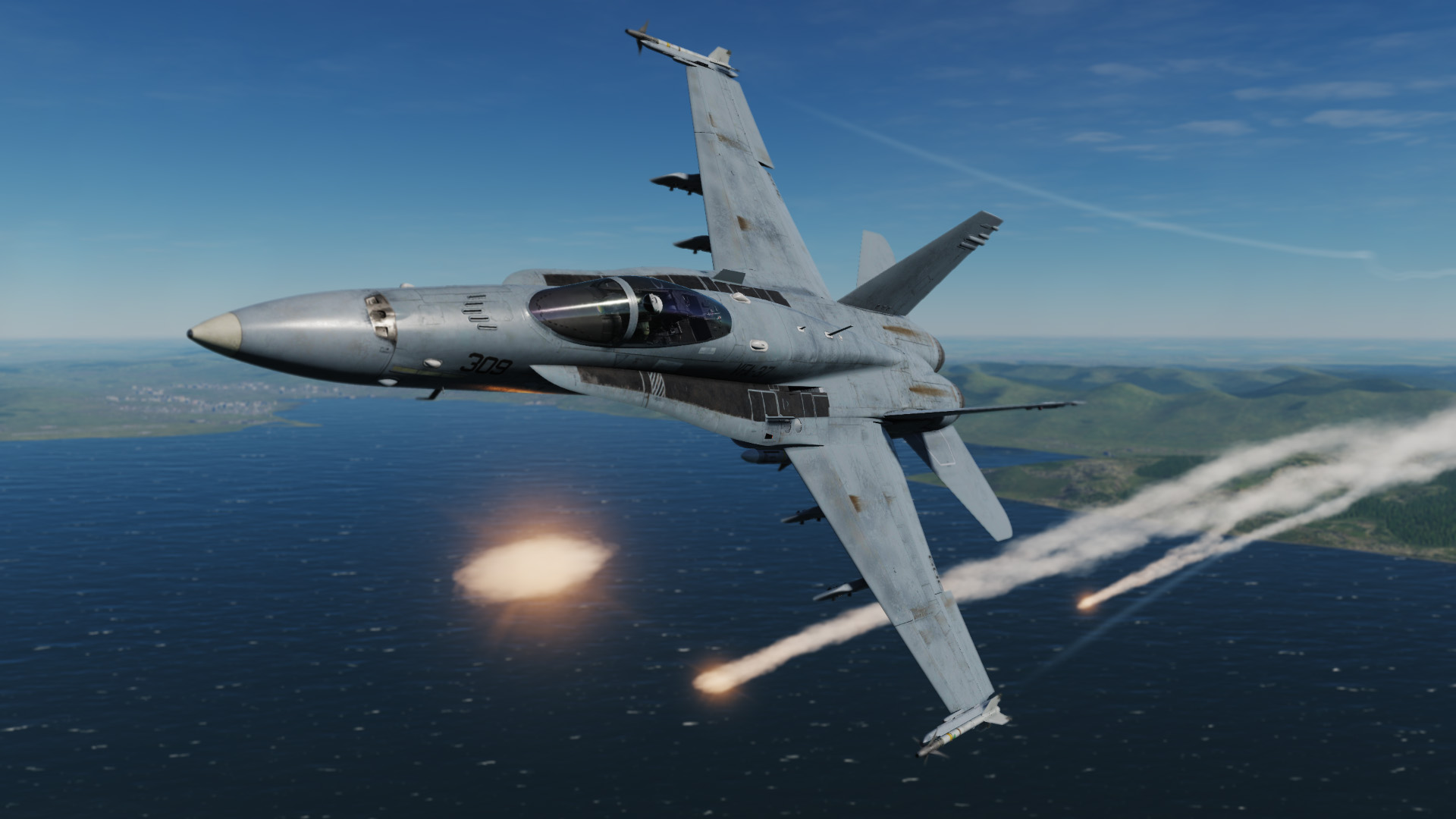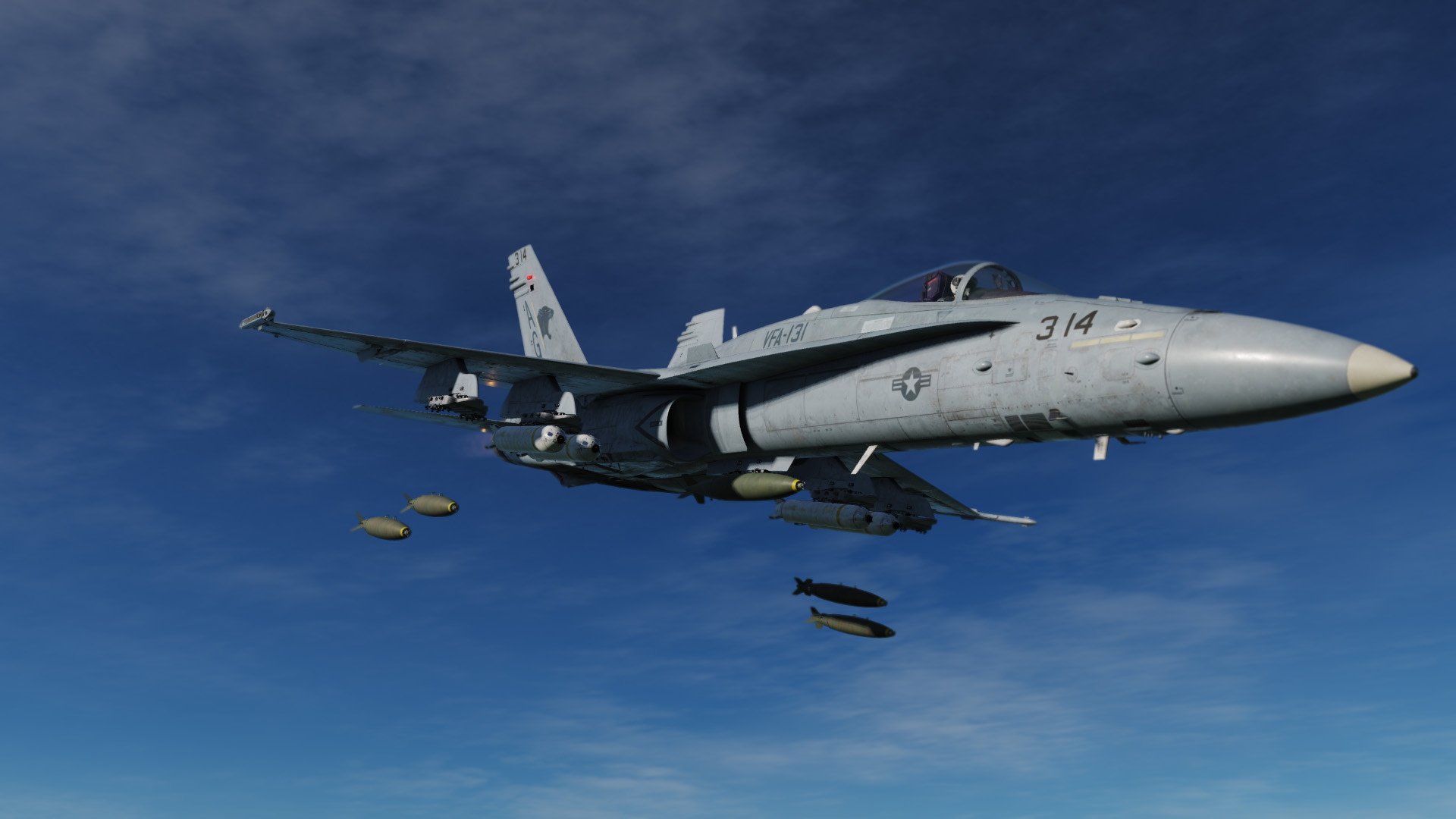General
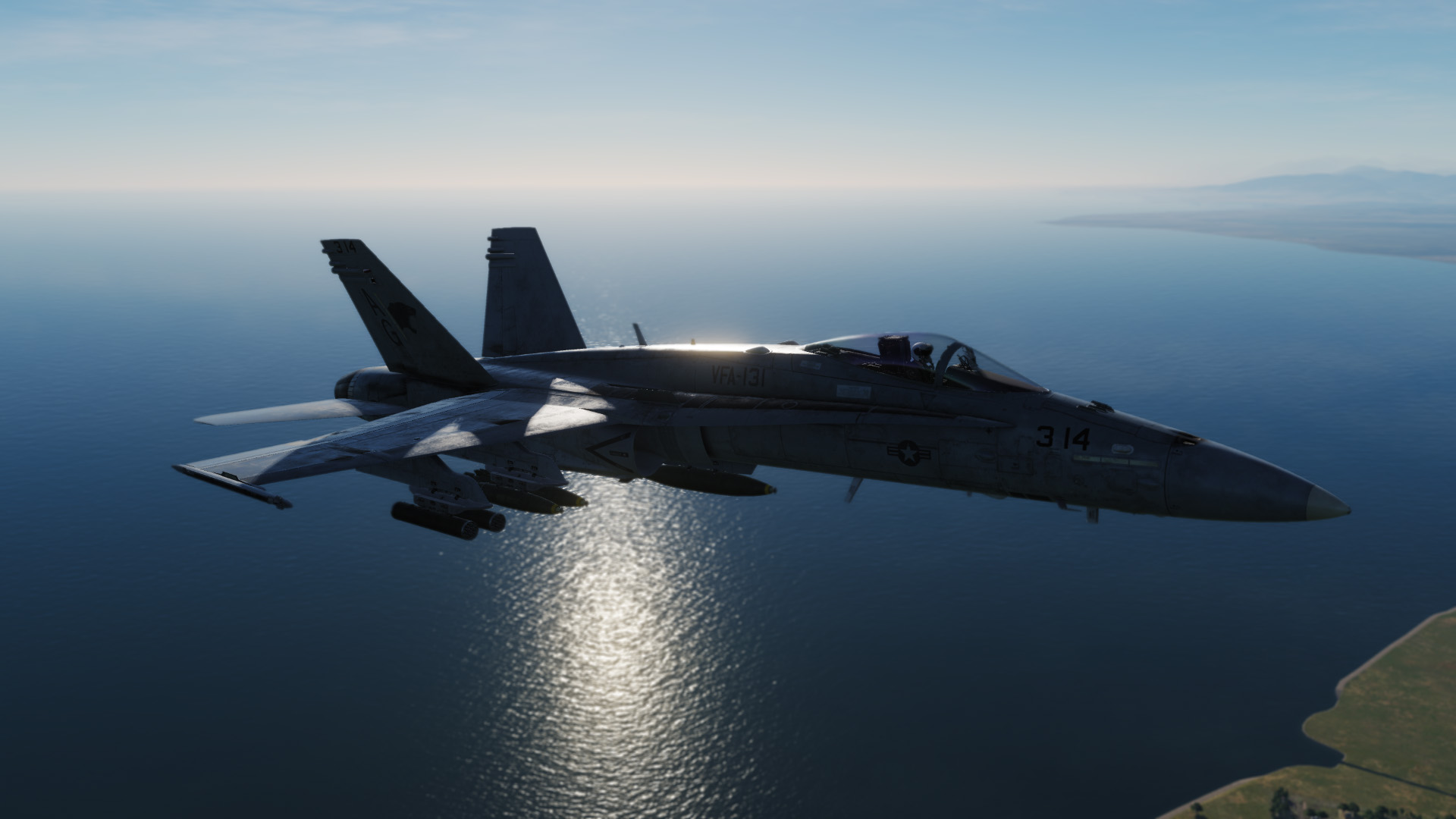 In this course we will describe the basic weapon systems and their deployment. With this we build on the basic course and enable you to gain a first impression of the F/A-18C as a weapon platform.
In this course we will describe the basic weapon systems and their deployment. With this we build on the basic course and enable you to gain a first impression of the F/A-18C as a weapon platform.
We have decided to split the topic of "weapon useage". In this course we will only deal with unguided weapon systems. These can be used without extensive knowledge of the aircraft's avionics systems. More complicated weapons such as laser-guided or precision-guided bombs as well as the AGM-65 Maverick or AGM-88 Harm, for example, will be covered in the Advanced Weapons course.
We recommend that you take the Advanced flight courses first, because a pilot should first be able to fly his plane properly and master its systems before practising the use of weapons. However, we also know that many pilots are attracted by the thrill of experiencing a little "action" as soon as possible. We hope this course will whet your appetite for the F/A-18C so that you find the motivation to take the advanced flight courses.

